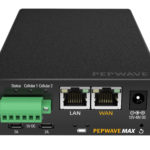Faced with the shutdown of 3G and ADSL copper services, an Australian City Council recently worked with M2M Connectivity to implement a faster, fully remote communications system to manage its traffic light and CCTV network.
Introduction
The Council’s transport department monitors council roads 24/7 and is required to provide real-time incident management. This includes high-bandwidth video streaming via CCTV cameras across approximately 360 intersections. Their legacy communications network operated using a hybrid model, utilising ADSL copper lines and 3G.
Challenge
The Council was informed that the ADSL copper service it relied on would be decommissioned. This was in addition to the planned phase-out of 3G (2100 MGHz). These changes impacted approximately 30 per cent of its WAN.
Initially they explored fixed line solutions, including the NBN, but could not find a provider to support their unique needs. A key challenge was the fragmented availability of services in each area. Plus, their desire to future proof their network knowing bandwidth requirements would increase over time.
The Council was also keen to overcome the burden of maintenance which had become a feature of its incumbent solution. Without a remotely managed communications network, the Council was reliant on technicians to conduct in-person visits to update and replace components – including modems and SIM cards.
Solution
Working closely with M2M Connectivity and its partners, the Council chose 4G as the best network technology to build its solution on. After a considered evaluation phase, it chose Peplink’s UBR LTE and Max Transit Duo modems to form the heart of its solution.
Supplied by M2M Connectivity, the Peplink devices were chosen due to their reliability and ease of deployment – combined with their ability to perform in rugged environments and their inclusion of dual 4G Radios with dual SIM slots. Peplink’s SpeedFusion technology was also a key consideration meaning the Council could reduce jitter and improve latency in CCTV footage.
M2M Connectivity conducted a proof-of-concept to meet each requirement outlined by the Council. This was trialled over a three-month period in combination with their in-house network management platform.
The final solution, including approximately 400 Peplink modems, was deployed within a four-month period.
A key factor in the speed of deployment was the fact that M2M Connectivity pre-configured each device, including the provision and installation of SIMs, which meant the Council could ‘plug and play’ each device.
The Council also credits the project management methodology employed by M2M Connectivity which streamlined the implementation.
Outcomes
Within twelve months, the Council has successfully evaluated and rolled out its new communications infrastructure. The organisation now has a fully remote traffic management system operating on 4G, which can be upgraded to 5G in the future. Following the success of the rollout, the Council is now looking to replace its entire fleet of modems with Peplink modems.
Key outcomes of the implementation, include:
- 4G upgradeable to 5G – increasing system lifecycles freeing up IT Managers to focus on broader projects.
- 2 x 4G Radios for increase in bandwidth – increasing the capacity to stream high quality CCTV video and plan for additional services.
- SpeedFusion technology – SDWAN solution providing bandwidth aggregation and seamless failover
- Shift to fully-remote management model – reducing inefficiencies and costs associated with manual system maintenance.




